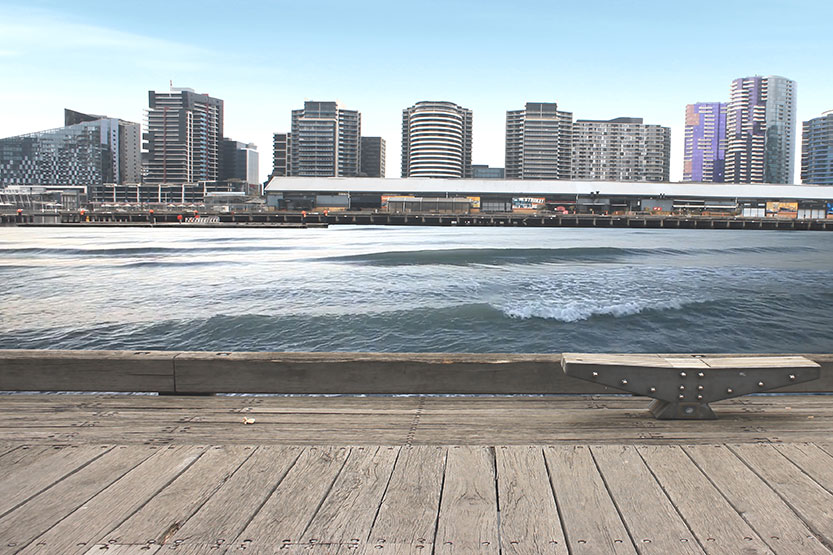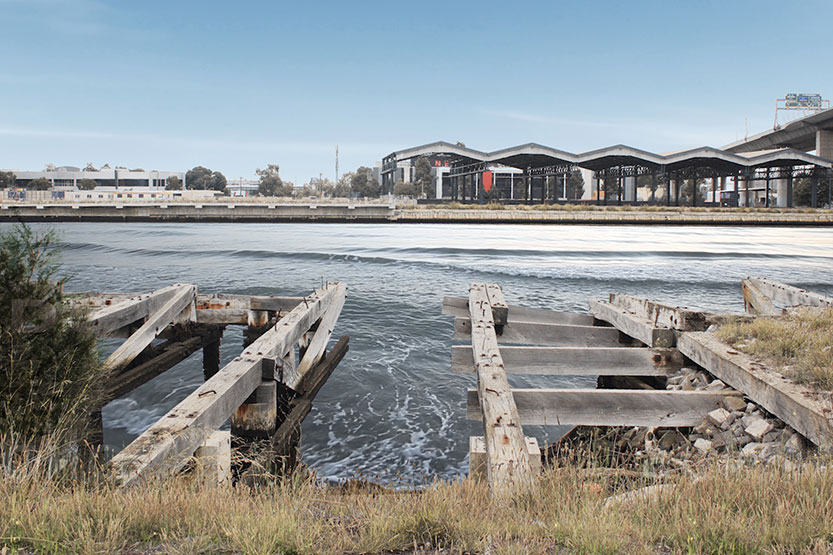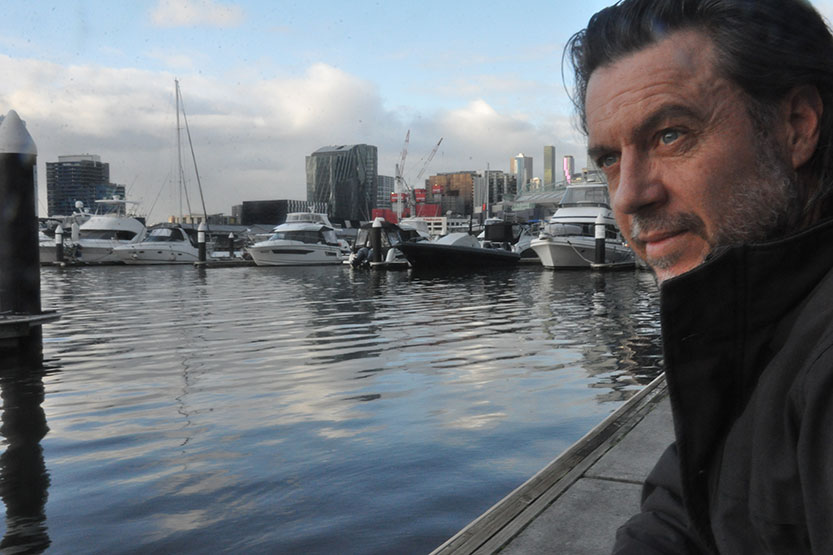The surf’s up in Victoria Harbour
Victoria Harbour is full of piers, boats and privatised moorings and its edges are rocky or raised platforms of aged timber.
When architect and researcher Damien Rogers sits by the harbour he is thinking of the surface of the water.
On the day he spoke to Docklands News about his research, the water was oily.
He calls this state “still” and says there is just one other state called “moving” when the water is whipped up by a light wind.
“Post-industrial waterways around the world are the same,” he said. “If you turn your back or step away you would hardly know that the water is there because it is so enclosed.”
The city’s background noise dominates the soundscape and it’s not even possible to pick up the sound of water lapping against a boat or the edge.
Dr Rogers wants to change perceptions by activating our connection to the water so that we see it as open space and he’s done a PhD on the topic at Swinburne University.
A feeling for place is a complex concept studied by architects with terms such as affordance and blue vague that are quite abstract.
Basically, affordance refers to what you can do in an environment, what appears in your mind’s eye, and blue vague to an abandoned left over space with potential.
The father of five from Point Cook activated his own connection to Docklands when he worked on Victoria Point, one of the early buildings.
Many architects hold Docklands in awe as a place where imaginations and respect for sight lines counted for something during the development phase.
But, according to online surveys of about 30 locals, people are not that connected to the water, seeing it as a visual backdrop to the buildings.
When Dr Rogers added a wave to the video collages of Docklands, he said it activated the relationships of respondents to the shore with a sense of surprise.
“When they saw waves, this led to questions. It reminded them of another place. Hence, we created a sensory experience of the water that permeates the edge,” he said.
He said the problem was that there was no permeable edge at Docklands. “A lot of the time we just add to the water instead of activating it.”
Dr Rogers wants to sculpt the water at Victoria Harbour and has studied the heritage waterways in London, where people swim, and in Finland where a wave machine has been installed beneath the water.
“We could have a Festival of the Wave here,” he said. “We could activate the water from the bottom up.”
Architects like the challenge of speculation and Dr Rogers takes a course at Swinburne where students speculate about Docklands.
He wants to bring in the blue mind of the ocean to improve our health and wellbeing. •

New park to revitalise historic maritime precinct in Docklands






 Download the Latest Edition
Download the Latest Edition